Welcome to Luxor! This beautiful city is home to a wide variety of birds, from tiny sparrows to majestic storks. With its lush green vegetation and numerous bodies of water, Luxor is an ideal place for birds to feed, nest, and rest.
Luxor is one of the most important bird-watching destinations in Egypt, as it is home to a wide range of species, including ducks, egrets, herons, cormorants, owls, and vultures.
Whether you’re looking for a family-friendly activity or an outdoor adventure, bird-watching in Luxor is an exciting and educational activity that is sure to delight you. So grab your binoculars and discover the wonderful world of birds in Luxor!
1. Greater Flamingo
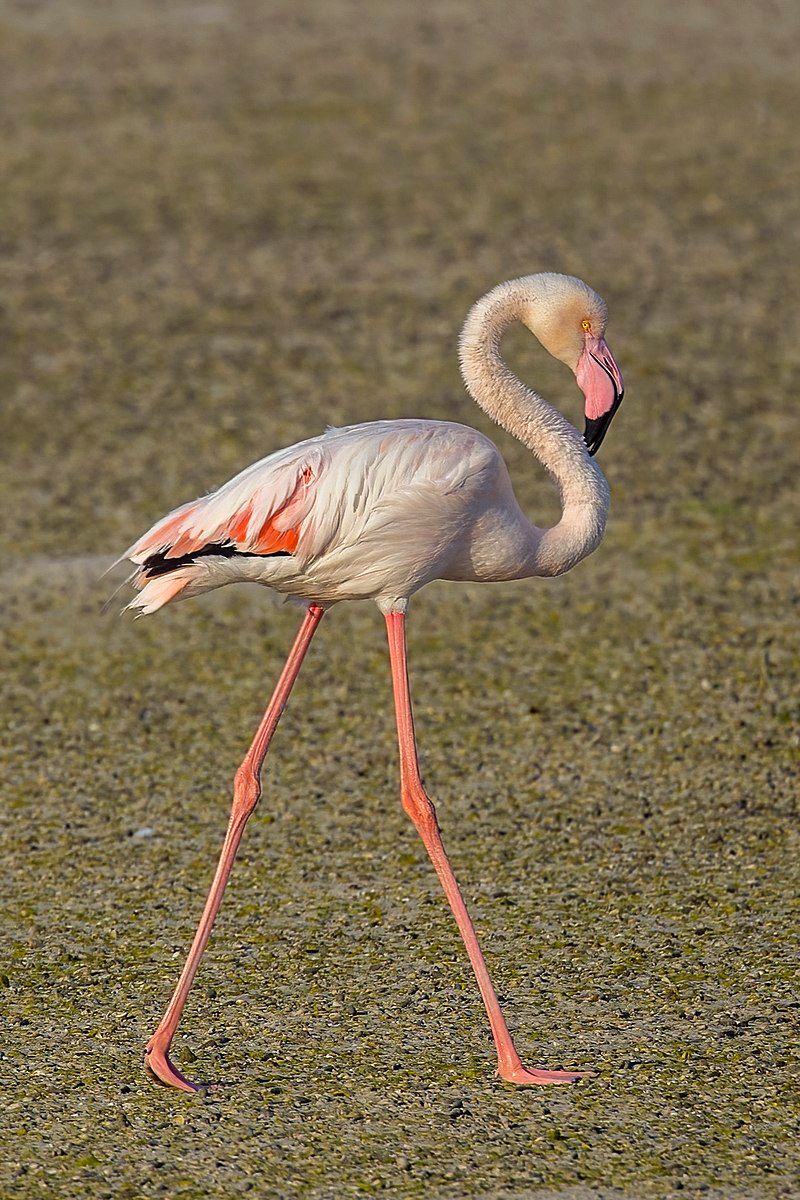
The greater flamingo is a species of the flamingo family that is found throughout the Old World. It is the most widespread and largest of all the flamingo species.
These birds can be found in Northern and Sub-Saharan Africa, the Indian Subcontinent, the Middle East, the Levant, the Persian Gulf, the Gulf of Aden, the Red Sea, and the Mediterranean countries of Southern Europe.
The greater flamingo is an easily recognizable bird due to its size and pink plumage. They have a long neck and legs, a curved bill, and a wingspan of up to 3 feet. Their pink coloration is due to carotenoid pigments found in their diet.
These birds prefer habitats such as shallow lagoons, lakes, and coastal lagoons. They feed on small aquatic invertebrates such as shrimp and algae. The greater flamingo is a social bird that lives in large colonies of thousands of birds.
During the breeding season, the birds will gather in large flocks of up to 1 million birds. They nest in shallow water, close to their food source, and lay one to three eggs per clutch. The eggs are incubated for about 28 days before the chicks hatch.
The young birds are dependent on their parents for up to one year. Due to their expansive range and large population, the greater flamingo is listed as a species of least concern on the IUCN Red List.
However, their population is decreasing in some areas due to habitat destruction, hunting, and the use of pesticides. Therefore, it is important to conserve and protect their habitats in order to ensure their continued survival.
| Kingdom | Animalia |
| Phylum | Chordata |
| Class | Aves |
| Order | Phoenicopteriformes |
| Family | Phoenicopteridae |
| Genus | Phoenicopterus |
| Species | P. roseus |
2. Black-Winged Stilt

The black-winged stilt is a type of long-legged wading bird that belongs to the avocet and stilt family. It is found in many parts of the world and is given the scientific name H. himantopus.
This species of bird is considered to be almost cosmopolitan, meaning that it can be found in many different places. The black-winged stilt is a distinctive bird, due to its long legs and black wings.
It can often be seen standing in shallow water, searching for food with its long beak. Its diet consists of small aquatic creatures such as insects and larvae, as well as some plants.
It is also known to feed on mollusks and worms. The black-winged stilt is an important species in many of the wetland habitats it inhabits. It is a key predator, helping to keep populations of small aquatic creatures in balance.
The black-winged stilt is also an important part of the food chain. It is a major source of food for many other species, including birds of prey, snakes, and mammals.
Overall, the black-winged stilt is an important species in many areas of the world, both ecologically and economically. Its presence helps to sustain healthy wetlands and other aquatic habitats, and it is also a major part of the food chain for many animals.
| Kingdom | Animalia |
| Phylum | Chordata |
| Class | Aves |
| Order | Charadriiformes |
| Family | Recurvirostridae |
| Genus | Himantopus |
| Species | H. himantopus |
3. Egyptian Goose
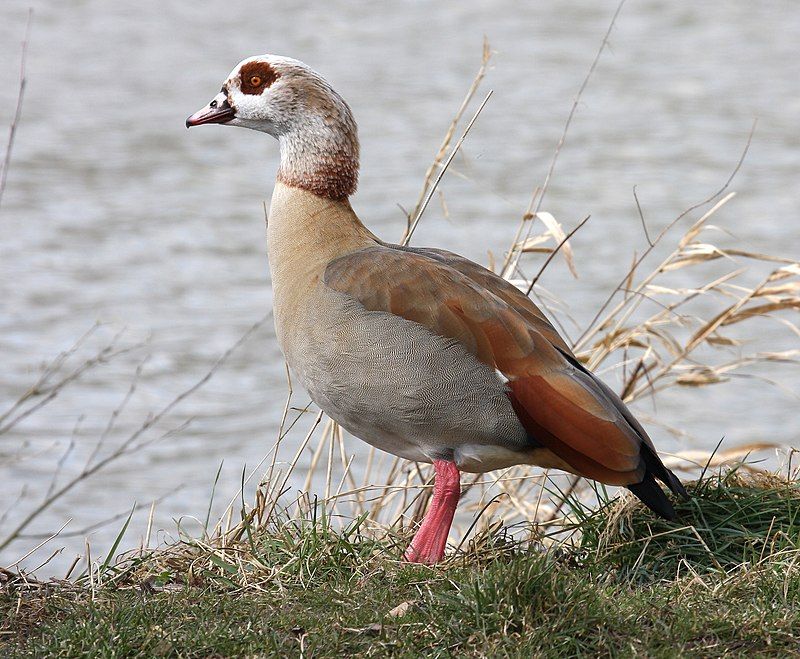
The Egyptian goose is a species of waterfowl native to Africa, belonging to the duck family Anatidae.
This species is particularly popular due to its attractive and ornamental appearance, resulting in its introduction to regions outside of its natural range, such as Europe, the United States, and other parts of the world.
The Egyptian goose is often seen in parks, gardens, and other public areas, as well as sometimes being kept as pets. Although the Egyptian goose is an exotic species, it has adapted to its new environments quite well.
It is now a common sight in many parts of the world and is considered to be a relatively successful introduced species. The Egyptian goose mainly feeds on grasses, grains, and other vegetation, as well as small invertebrates.
It is also known to sometimes attack and feed on the eggs of other waterfowl. The Egyptian goose is an important part of the African ecosystem and plays a vital role as a seed disperser and predator. Unfortunately, this species is also threatened by hunting and habitat destruction.
Conservation efforts have been put in place to protect the Egyptian goose, including limiting hunting and protecting its natural habitats.
By doing this, we can ensure that the Egyptian goose is able to survive and thrive in its native range, as well as any regions it has been introduced to.
| Kingdom | Animalia |
| Phylum | Chordata |
| Class | Aves |
| Order | Anseriformes |
| Family | Anatidae |
| Genus | Alopochen |
| Species | A. aegyptiaca |
4. Cattle Egret

The cattle egret is a species of heron that can be found in a variety of climates, from tropical to warm-temperate. It is the only member of its genus, Bubulcus.
Depending on who you ask, however, it may actually be two species – the western cattle egret and the eastern cattle egret. These two are so similar that some experts group them together as one species, while others see them as distinct.
In either case, the cattle egret is a unique bird, with a wide range of habitats across the globe.
| Kingdom | Animalia |
| Phylum | Chordata |
| Class | Aves |
| Order | Pelecaniformes |
| Family | Ardeidae |
| Genus | Bubulcus |
| Species | B. ibis |
5. Little Egret

The little egret is a species of small heron, which belongs to the family Ardeidae. It has a slender black beak, long black legs and, in the western race, yellow feet. This bird is a white color, and is often seen near water due to its aquatic lifestyle.
It feed in shallow water or on land, eating a variety of small animals such as fish, insects, amphibians, and crustaceans.
It is an important species of bird in many parts of the world, as it helps to keep natural ecosystems in balance by keeping the population of prey species in check.
As it is a migratory species, it is often seen in different parts of the world depending on the season, further aiding its importance in maintaining a balanced environment.
| Kingdom | Animalia |
| Phylum | Chordata |
| Class | Aves |
| Order | Pelecaniformes |
| Family | Ardeidae |
| Genus | Egretta |
| Species | E. garzetta |
6. Grey Heron

The Grey Heron is a large, long-legged bird that belongs to the heron family, Ardeidae. It has a wide range, spanning temperate areas of Europe, Asia, and parts of Africa.
This species is mostly resident, meaning that it stays in its habitat year-round, but some populations from the more northern parts of its range will migrate south in the autumn.
The Grey Heron is a magnificent bird that is easily identified by its long neck, grey feathers, and yellow legs. It is often seen standing in shallow water, waiting patiently for its prey.
It is a carnivorous species that feeds on fish, frogs, small mammals, and other small birds. It generally nests close to water, in colonies with other herons, and can be found in marshes, lakes, rivers, and wetlands.
The Grey Heron is an essential part of many ecosystems, helping to keep populations of smaller animals in check. It is a species of least concern, meaning that its numbers are healthy and stable.
However, it is still vulnerable to human-caused disturbances such as pollution, habitat loss, and hunting. It is important to preserve its natural habitat in order to ensure its continued survival in the wild.
| Kingdom | Animalia |
| Phylum | Chordata |
| Class | Aves |
| Order | Pelecaniformes |
| Family | Ardeidae |
| Genus | Ardea |
| Species | A. cinerea |
7. Glossy Ibis

The Glossy Ibis is a water bird that belongs to the order of Pelecaniformes and the ibis and spoonbill family of Threskiornithidae. Its scientific name originates from Ancient Greek and Latin words, “plegados” and “falcis” respectively.
These words translate to “sickle” in English and refer to the unique shape of the ibis’ bill. The bill is curved and pointed, resembling a sickle, which is used to isolate food from the water’s surface.
This feature helps the glossy ibis to feed on aquatic insects, small fish, and other organisms. Additionally, it has a long neck and long legs which allow it to wade through shallow water. The glossy ibis is found in wetlands, marshes, swamps, and other shallow bodies of water.
Its feathers are dark brownish-black with a glossy sheen, hence the name. It is a migratory bird and can be seen in many parts of the world during the summer months.
| Kingdom | Animalia |
| Phylum | Chordata |
| Class | Aves |
| Order | Pelecaniformes |
| Family | Threskiornithidae |
| Genus | Plegadis |
| Species | P. falcinellus |
8. Great White Pelican
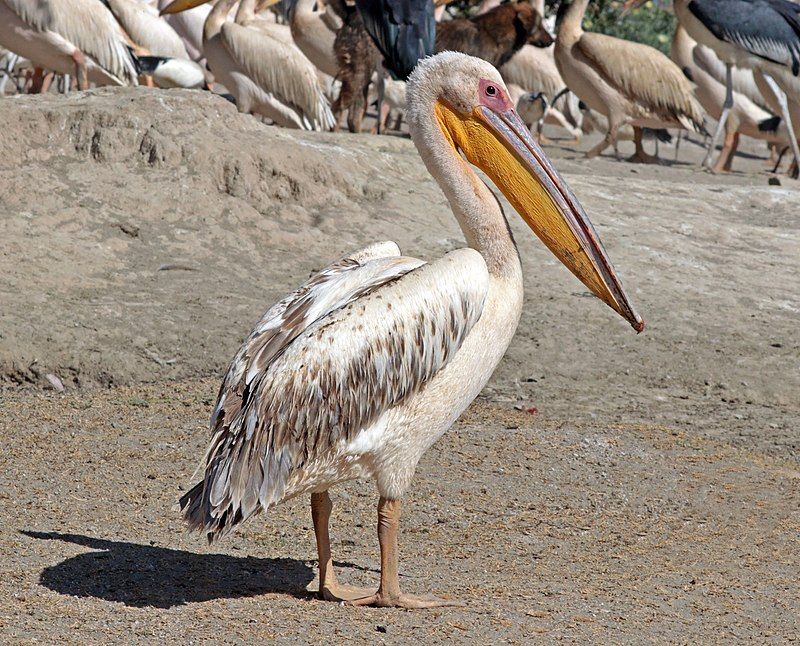
The great white pelican is a species of bird belonging to the pelican family. It is an impressive bird, easily distinguished by its gigantic size, white plumage and prominent bill pouch. It can be found in a variety of habitats, from southeastern Europe to Asia and Africa.
It is particularly fond of shallow lakes and swamps, where it can find ample food to sustain itself. The great white pelican has a number of different names, including the eastern white pelican, rosy pelican or white pelican.
It is a large bird, with a wingspan of up to 11 feet and a body length of up to 4.5 feet. Its white plumage is contrasted by black-tipped wings and webbed feet.
It also has a large, orange-colored bill pouch which can be used to scoop up food from the water. The great white pelican feeds mainly on fish, which it catches by diving into the water. It can dive up to 10 feet deep and stay underwater for up to 30 seconds.
It usually lives in large colonies of up to several hundred birds, breeding during the summer months.
During the breeding season, the male and female birds perform elaborate courtship displays, including synchronized dives and bill-clapping. The great white pelican is an important species, providing an important link in many food webs and ecosystems.
It is also a popular sight for bird watchers, who can witness its impressive size and behavior up close. The species is currently listed as Least Concern on the IUCN Red List, but its global population is slowly decreasing due to habitat loss and degradation.
| Kingdom | Animalia |
| Phylum | Chordata |
| Class | Aves |
| Order | Pelecaniformes |
| Family | Pelecanidae |
| Genus | Pelecanus |
| Species | P. onocrotalus |
9. Nile Valley Sunbird
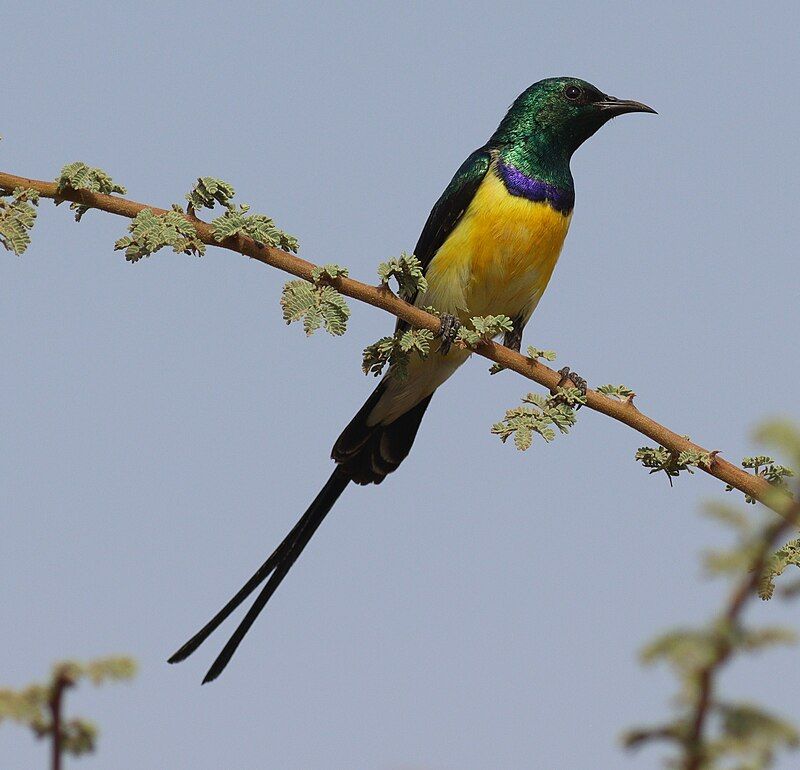
The Nile Valley sunbird is a species of bird belonging to the family Nectariniidae, commonly found in various countries of the Middle East and parts of Africa, such as Djibouti, Egypt, Eritrea, Ethiopia, Rwanda, Oman, Saudi Arabia, Somalia, Sudan, Libya, and Yemen.
In particular, February is a special month for this species, as males assume their nuptial plumage, which they display in a flamboyant manner. This plumage is made up of bright colors and intricate patterns that males use to attract a mate.
They perform elaborate courtship displays, fluttering around the female while producing a loud, melodic call. This activity is more pronounced during the mating season, as the males attempt to show off their nuptial plumage to the maximum potential.
The female sunbird then chooses a mate with the best nuptial plumage and the most intricate courtship display. After mating, the pair will remain together for the rest of the breeding season.
| Kingdom | Animalia |
| Phylum | Chordata |
| Class | Aves |
| Order | Passeriformes |
| Family | Nectariniidae |
| Genus | Hedydipna |
| Species | H. metallica |
10. Pied Kingfisher
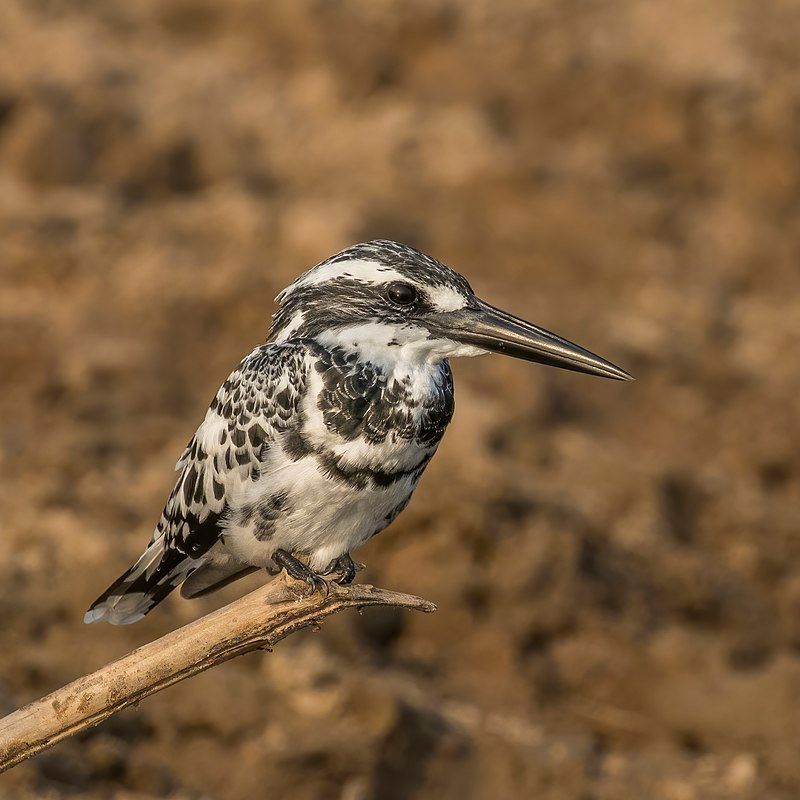
The pied kingfisher is a species of water kingfisher, found in many parts of Africa and Asia. It was first described by the famous Swedish naturalist Carl Linnaeus in 1758, and since then five subspecies of the bird have been recognised by scientists.
The pied kingfisher is a distinctive species, with a largely black and white plumage, and an unmistakable, loud call. It is most often found near bodies of water, such as rivers, lakes, and ponds, where it uses its long bill to catch fish.
It is a social bird, often forming colonies and breeding in groups. It is an important part of the food chain, as its diet helps to control populations of fish which could otherwise become too numerous.
The pied kingfisher is a fascinating species, and its beauty and presence near water make it an important part of many ecosystems.
| Kingdom | Animalia |
| Phylum | Chordata |
| Class | Aves |
| Order | Coraciiformes |
| Family | Alcedinidae |
| Genus | Ceryle |
| Species | C. rudis |
11. Squacco Heron
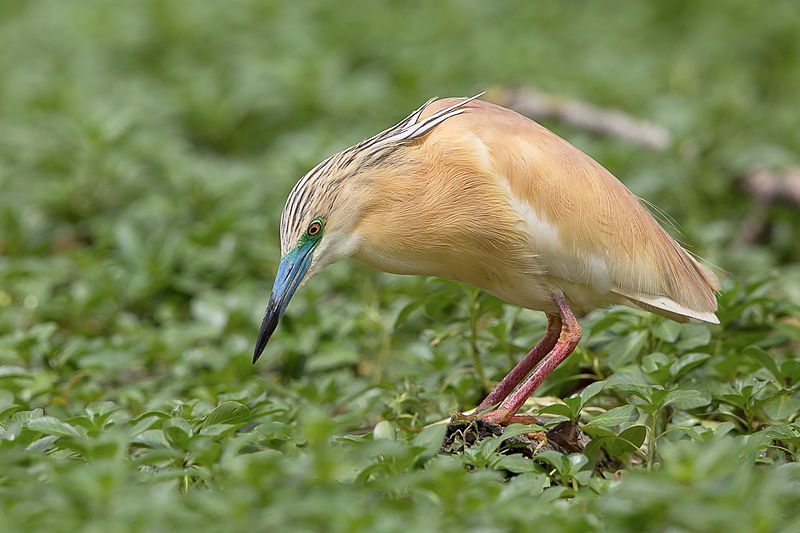
The Squacco Heron is a species of small heron found in the Old World. Measuring between 44-47 cm in length, it has a body length of 20-23 cm and a wingspan of 80-92 cm.
This species is found mainly in southern Europe and parts of the Greater Middle East, where it breeds in marshy areas. It is a solitary bird that largely feeds on insects, crustaceans, amphibians and small fish.
It has white and buff plumage with brown markings and a brown crown with a white stripe. In addition, it has yellow legs and a long, thin, grey beak. The Squacco Heron is quite a shy bird, and often hides in the reeds and long grass at the edge of ponds and rivers.
It is a protected species, and its conservation status is listed as near threatened.
| Kingdom | Animalia |
| Phylum | Chordata |
| Class | Aves |
| Order | Pelecaniformes |
| Family | Ardeidae |
| Genus | Ardeola |
| Species | A. ralloides |
12. Purple Heron
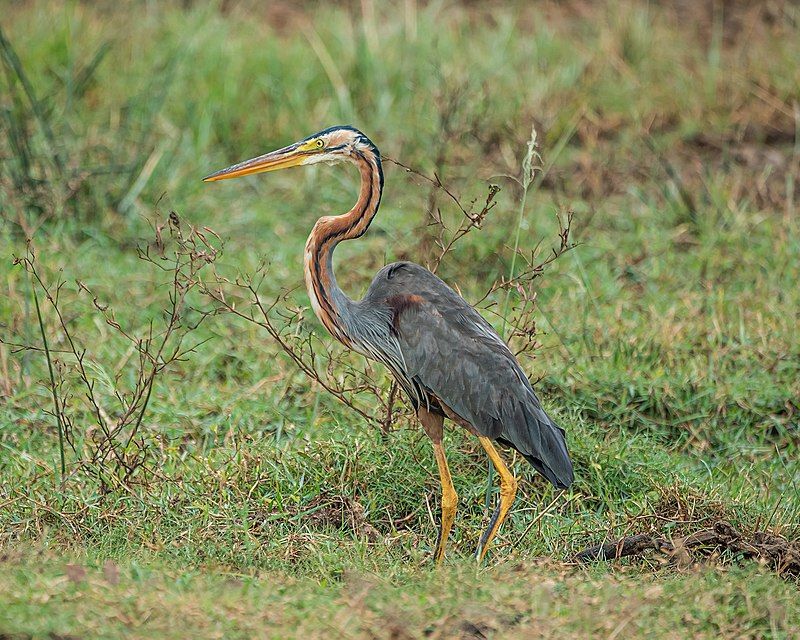
The Purple Heron is a species of wading bird that belongs to the heron family, Ardeidae. It is renowned for its impressive wingspan and its distinctive purple color.
The scientific name of the Purple Heron is derived from Latin, with ardea meaning “heron” and purpureus meaning “colored purple”.
This species of heron is widely distributed throughout various parts of the world, often found in places such as Africa, Central and Southern Europe, and Southern and Eastern Asia. During the breeding season, the Purple Heron is known to live in wetlands, swamps, and marshes.
They also inhabit agricultural land and coastal lagoons that are abundant with fish. These herons feed on aquatic animals such as insects, fish, frogs, and crustaceans.
The Purple Heron is a protected species in many countries, and its conservation status is considered to be of “Least Concern” by the IUCN Red List.
| Kingdom | Animalia |
| Phylum | Chordata |
| Class | Aves |
| Order | Pelecaniformes |
| Family | Ardeidae |
| Genus | Ardea |
| Species | A. purpurea |
13. Striated Heron
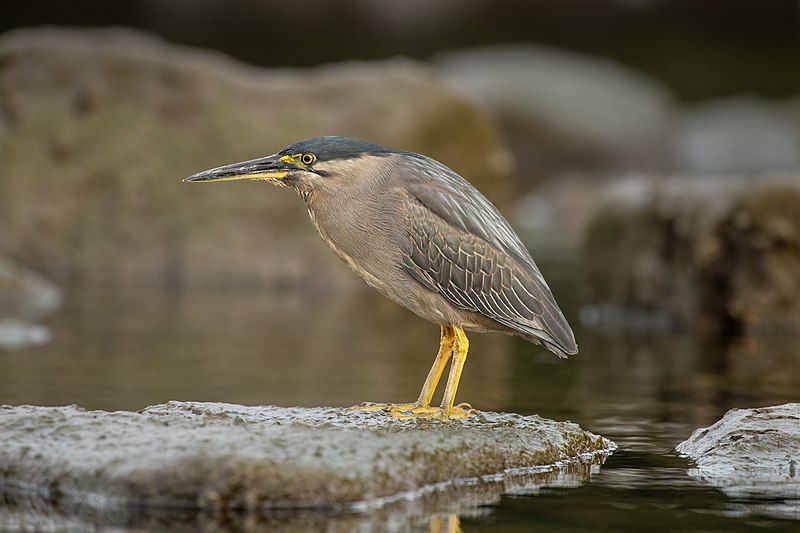
The Striated Heron is a small species of heron, measuring approximately 44 cm tall. It is also known as the Mangrove Heron, Little Green Heron, and Green-backed Heron. These herons are mostly sedentary, meaning they tend to stay in the same area for the majority of the year.
Despite this, they exhibit some interesting behaviors that make them stand out from other herons. One of the most remarkable traits of the Striated Heron is their ability to stand still for long periods of time, even in the face of potential danger.
This allows them to blend in and avoid detection by predators and other potential threats.
This behavior is often observed when they are hunting for prey, as they can remain completely still while they wait for their target. Striated Herons are also known to frequently dive underwater in order to catch fish and other aquatic prey.
This behavior is even more impressive considering the heron’s small size.
They are also known to use their long bills to probe into mud and other soft substrates in search of food. In addition to their interesting behaviors, Striated Herons are also known for their beautiful plumage.
The males typically have a dark green back and wings, while the females have a grey-brownish back and wings. Both sexes have a white belly and a long dark bill. Overall, the Striated Heron is an interesting species with many unique behaviors and attractive plumage.
These herons are a joy to observe and can often be found in coastal regions, mangroves, and other wetlands around the world.
| Kingdom | Animalia |
| Phylum | Chordata |
| Class | Aves |
| Order | Pelecaniformes |
| Family | Ardeidae |
| Genus | Butorides |
| Species | B. striata |
14. Spur-Winged Lapwing

The spur-winged lapwing, also known as the spur-winged plover, is a species of lapwing found in the family Charadriidae. Lapwings are a type of wader, a group of large-bodied birds that typically feed on insects or other small aquatic creatures.
The spur-winged lapwing is particularly notable for its involvement in the ancient cleaning symbiosis between the Nile crocodile and the trochilus bird, which was described by the ancient Greek historian Herodotus.
According to Herodotus, the trochilus bird would visit the Nile crocodile and feed on parasites or other unwanted material from its body.
This relationship was thought to be mutually beneficial, as the Nile crocodile was able to rid itself of parasites and the trochilus bird was able to feed on them.
Although the exact species of bird involved in this ancient symbiosis is unknown, the spur-winged lapwing is one of the species of wader thought to be the trochilus bird described by Herodotus.
| Kingdom | Animalia |
| Phylum | Chordata |
| Class | Aves |
| Order | Charadriiformes |
| Family | Charadriidae |
| Genus | Vanellus |
| Species | V. spinosus |
15. Garganey

The garganey is a small dabbling duck that can be found in many parts of Europe and the Palearctic. During the Northern Hemisphere’s winter, the entire population of garganey ducks will migrate to warmer climates, such as southern Africa, India, Bangladesh, and Australasia.
When they reach these areas, the ducks form large flocks. The garganey is a highly migratory species, meaning they will travel great distances to reach suitable habitats.
This is likely due to the fact that their breeding grounds in Europe and the Palearctic can become too cold during the winter. By migrating to areas such as southern Africa, India, Bangladesh, and Australasia, the ducks can find more suitable climates for their winter needs.
Due to their migratory habits, the garganey duck is an important species for many ecosystems. By using different habitats in different seasons, the duck helps to spread nutrients and energy throughout various regions. This in turn helps to keep the environment in balance.
Furthermore, the presence of large flocks of garganey ducks in certain areas helps to bring in tourism and support local economies. Overall, the garganey is an important species due to its migratory habits.
By traveling to different regions in the winter, the ducks help to keep the environment in balance, while also bringing in tourists and money to the areas they inhabit.
| Kingdom | Animalia |
| Phylum | Chordata |
| Class | Aves |
| Order | Anseriformes |
| Family | Anatidae |
| Genus | Spatula |
| Species | S. querquedula |
16. White-Tailed Lapwing

The White-tailed Lapwing, also known as the White-tailed Plover, is a type of wader bird that belongs to the lapwing genus.
The scientific name of this species is Vanellus leucurus, which consists of two parts: Vanellus is a Medieval Latin name for a lapwing, derived from the Latin word vannus meaning a winnowing fan; and leucurus is an Ancient Greek word that means “white-tailed”.This species of bird is medium-sized, with long legs and a relatively long beak.
It is believed that its long legs help it move quickly on the ground, while its long beak is adapted for digging in the sand and mud to find food.
The White-tailed Lapwing is also known for its white tail feathers, which are part of the reason why it was given its scientific name. These tail feathers are believed to help the bird blend in with its surroundings, making it more difficult for predators to spot.
| Kingdom | Animalia |
| Phylum | Chordata |
| Class | Aves |
| Order | Charadriiformes |
| Family | Charadriidae |
| Genus | Vanellus |
| Species | V. leucurus |
17. Eurasian Wigeon
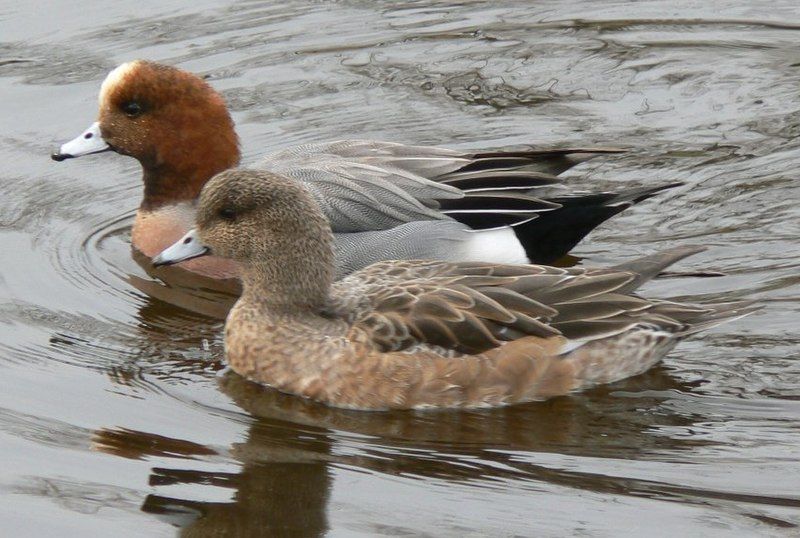
The Eurasian wigeon, also known as the European wigeon or simply the widgeon or the wigeon, is a species of dabbling duck that is found across the Palearctic region. It is one of three species of wigeon, the other two being the American wigeon and the Chiloe wigeon.
The Eurasian wigeon is a fairly common bird, with a wide range that stretches across the Eurasian continent, from northern Europe to Siberia, and east to northern China and Japan.
The Eurasian wigeon is a medium-sized duck, between 39 and 49 cm in length, with a wingspan of between 61 and 71 cm. The male has a grey head, white neck and chest, brown back and wings, and a white tail.
The female has a brown head, neck and chest, grey back and wings, and a white tail. Both sexes have a red bill and reddish-brown legs and feet. The Eurasian wigeon is a dabbling duck, meaning it feeds on the surface of the water, rather than diving as some other duck species do.
It feeds mainly on plant material such as pondweed, grasses, and sedges, as well as grazing on land on grains, insects, and other invertebrates. The Eurasian wigeon is also a popular game bird and is hunted for its meat.
The Eurasian wigeon breeds in the summer months, typically between April and August. The nest is built by the female on the ground, near water, and is made up of grass and other vegetation.
The female typically lays between 6 and 10 eggs, which she then incubates for around 25 days. The young ducklings are cared for by both parents and reach maturity at around three months old.
| Kingdom | Animalia |
| Phylum | Chordata |
| Class | Aves |
| Order | Anseriformes |
| Family | Anatidae |
| Genus | Mareca |
| Species | M. penelope |
18. Ardea Alba
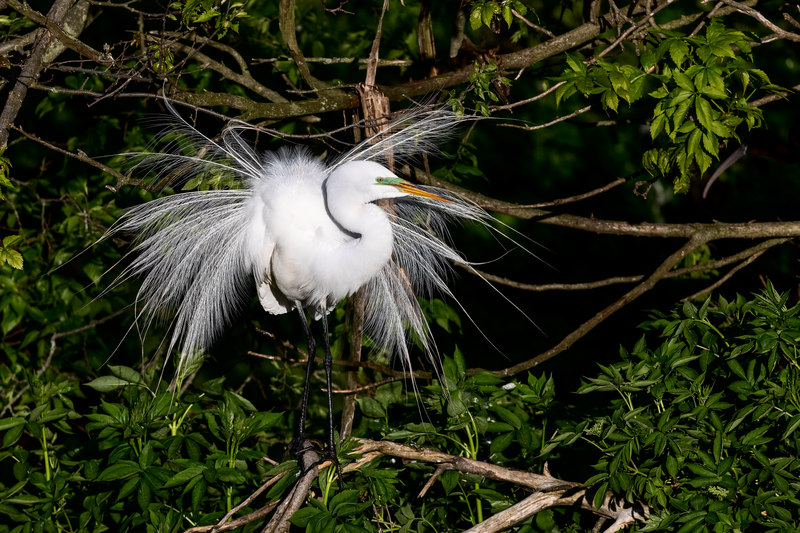
The great egret is a large bird species that can be found in many areas across the world. It is also known by other names such as common egret, large egret, great white egret, and great white heron.
There are four subspecies of the great egret, which can be found in Asia, Africa, the Americas, and southern Europe. In recent years, the great egret has been observed spreading to more northern areas of Europe, indicating a possible expansion to its range of habitats.
The great egret is a large species of bird, with a wingspan of up to 1.5 meters, and a height of up to 1 meter. It has a white body, with black legs and a yellow bill. The head is often partly covered by a crest of long, wispy feathers.
These feathers may be used for display purposes, during courtship or when defending territory. The great egret feeds mainly on fish, frogs, and insects, but it will also take small mammals and reptiles.
It is a wading bird, often found in wetlands and shallow water, such as lakes, rivers, and coastal mudflats. It is an excellent swimmer, and often dives beneath the water in search of food. The great egret is a long-lived species, with an average lifespan of up to 10 years.
It is also a highly social species, often living in large colonies.
They are an important species for wetland habitats, as they help to manage insect populations, which can otherwise become a nuisance. The great egret is also a popular species for birdwatchers, as it can often be observed in its natural habitat.
It is also a protected species in many areas, due to its importance to wetland ecosystems and its potential vulnerability to hunting and habitat destruction.
| Kingdom | Animalia |
| Phylum | Chordata |
| Class | Aves |
| Order | Pelecaniformes |
| Family | Ardeidae |
| Genus | Ardea |
| Species | A. alba |
19. Goliath Heron
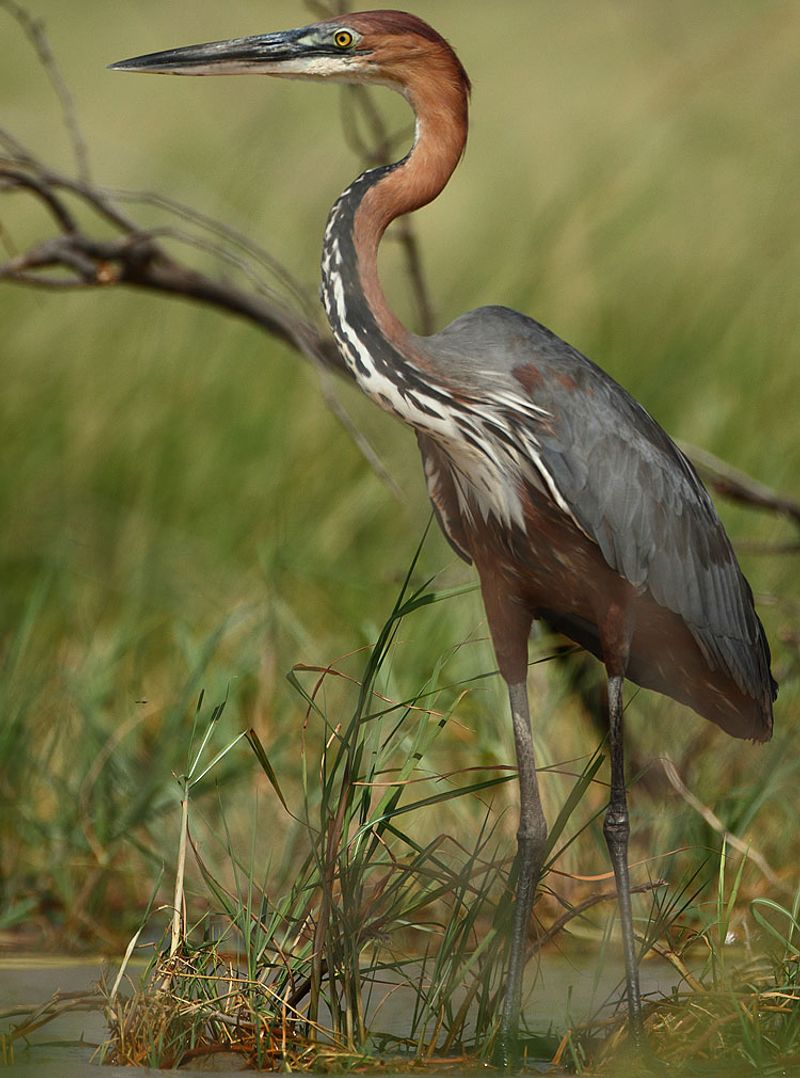
The Goliath heron is an impressive bird that can be found in many parts of Africa. It is a member of the heron family, Ardeidae, and is one of the largest wading birds in the world.
The Goliath heron is also known as the giant heron, and it is easily identifiable by its large size and distinct brown and white plumage.The Goliath heron is found predominantly in sub-Saharan Africa, although there are smaller and declining populations in Southwest and South Asia.
Its habitat is typically near wetlands, rivers, and marshes, where it hunts for fish and other aquatic creatures.
It is also commonly seen near the edges of lakes and ponds, and it is sometimes found near coastal areas. The Goliath heron is a solitary bird and typically avoids human contact.
It is usually seen standing in shallow water, and its long neck and legs help it to search for food in the water. The Goliath heron has a sharp, hooked bill, which helps it to catch its prey.
It also has powerful webbed feet, which help it to move around in the water. The Goliath heron is an important species in the ecosystem, as it helps to keep the population of smaller fish and aquatic creatures in check.
It is also an important food source for many other animals, such as crocodiles, otters, and birds of prey. Unfortunately, the Goliath heron is threatened by habitat destruction and hunting, and its numbers are declining in many areas.
| Kingdom | Animalia |
| Phylum | Chordata |
| Class | Aves |
| Order | Pelecaniformes |
| Family | Ardeidae |
| Genus | Ardea |
| Species | A. goliath |
20. Common Shelduck
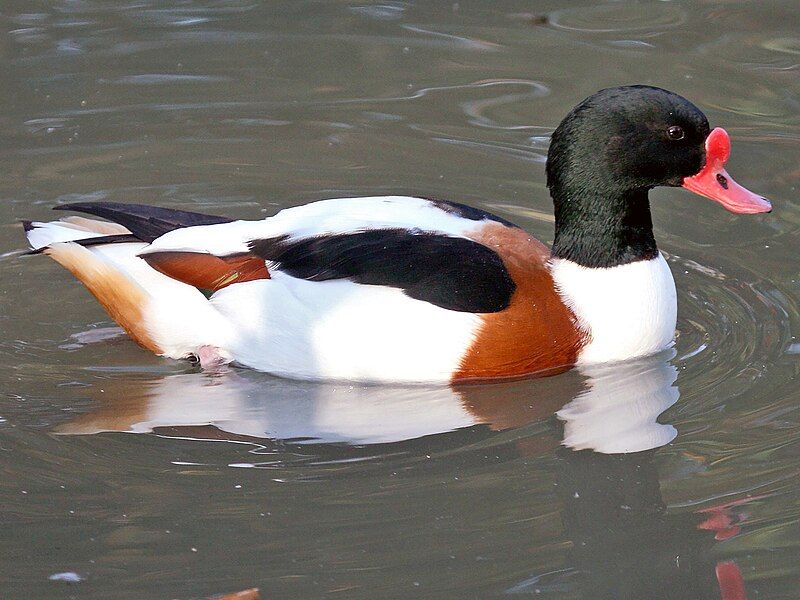
The common shelduck is a species of waterfowl belonging to the Tadorna genus. It can be found in many parts of the Euro-Siberian region of the Palearctic, a geographical area that covers Europe and western Asia.
This species of shelduck is quite common and widespread in these regions. It breeds mainly in temperate climates during the summer months and then migrates to subtropical regions during the winter months.
Additionally, it can also be spotted during the winter season in the Maghreb, a region in Northwest Africa that includes Algeria, Morocco, and Tunisia.
| Kingdom | Animalia |
| Phylum | Chordata |
| Class | Aves |
| Order | Anseriformes |
| Family | Anatidae |
| Genus | Tadorna |
| Species | T. tadorna |
21. Red-Breasted Merganser
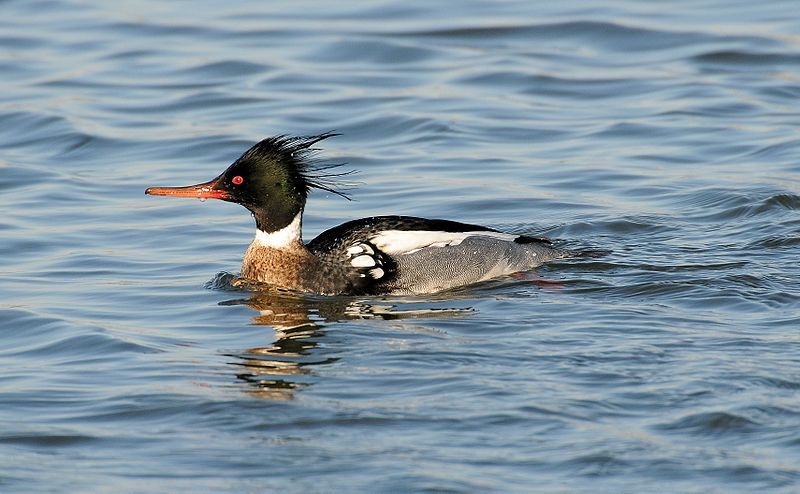
The red-breasted merganser is a species of duck that is widely distributed throughout the Northern Hemisphere. This species is named for the distinct red breast of the males during the breeding season.
The red-breasted merganser is one of the largest members of the merganser family and is easily identified by its long, slender bill and distinctive crest.
Males also have a red head and neck, with white streaks running down the sides of the neck and black wings with white patches. Females are distinguished by their brownish-gray heads and chests, with black and white barring on the wings.
During the breeding season, males of this species develop a bright red breast, giving them their common name. This red coloration is only seen in males and helps to attract potential mates.
Both male and female red-breasted mergansers have a black and white patterned back, with a white chin and a white line extending down from the base of the bill. The red-breasted merganser is found in a variety of habitats, including lakes, rivers, and coastal areas.
They feed mainly on fish, but will also eat crustaceans, mollusks, and aquatic insects. The red-breasted merganser is known to form large flocks during migration, and they often nest in colonies.
The red-breasted merganser is an important species in the Northern Hemisphere, providing an important food source for predators and helping to maintain healthy aquatic ecosystems.
They are also popular among birdwatchers and photographers due to their striking appearance and colorful plumage.
| Kingdom | Animalia |
| Phylum | Chordata |
| Class | Aves |
| Order | Anseriformes |
| Family | Anatidae |
| Genus | Mergus |
| Species | M. serrator |
22. Ruddy Shelduck
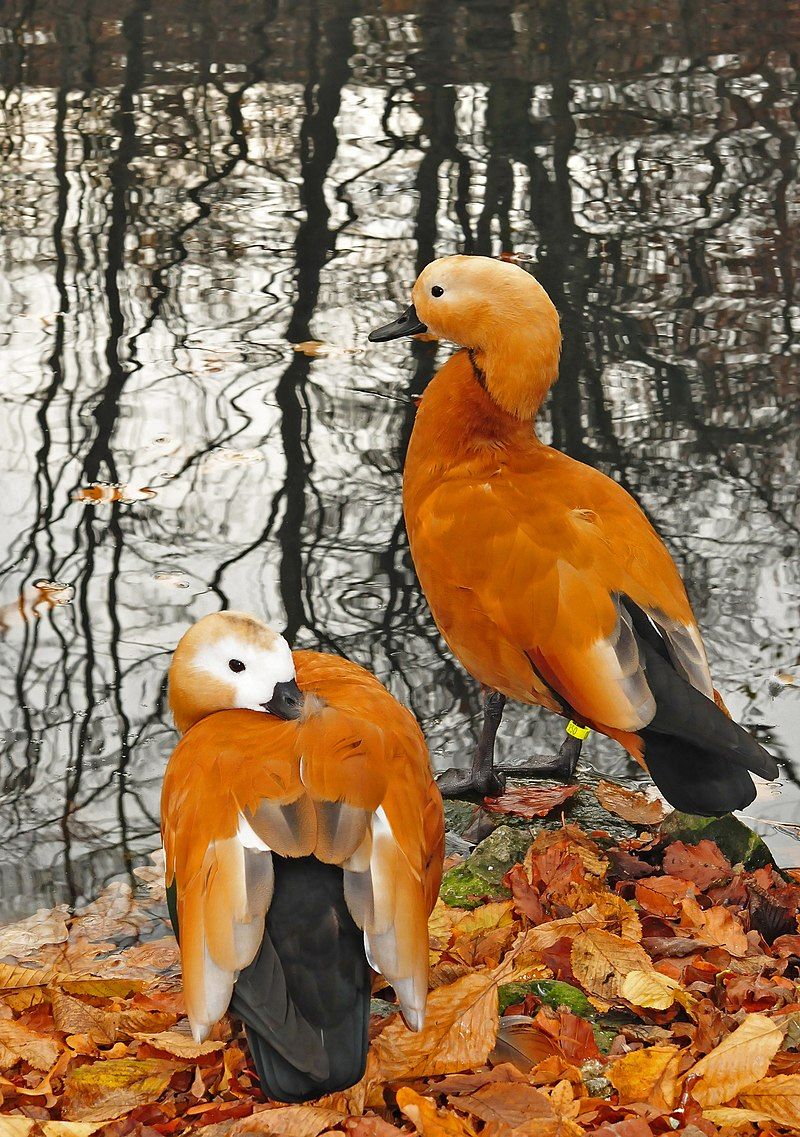
The ruddy shelduck, also known as the Brahminy duck, is a species of waterfowl belonging to the family Anatidae. It is a unique bird that stands out from other members of its family due to its size and features.
On average, the ruddy shelduck is 58 to 70 cm in length and has a wingspan of 110 to 135 cm. This makes it one of the larger waterfowl, and it is easily identifiable due to its distinctive colouration.
The ruddy shelduck has a reddish-brown body with white markings on its face, wings, and tail. Its beak is black with a white tip. The legs are usually a bright orange colour. The ruddy shelduck is native to India, but it can also be found in parts of Europe and Asia.
| Kingdom | Animalia |
| Phylum | Chordata |
| Class | Aves |
| Order | Anseriformes |
| Family | Anatidae |
| Genus | Tadorna |
| Species | T. ferruginea |
Conclusion
The birds of Luxor are an important part of the natural beauty of this beautiful city. From magnificent raptors to small passerines, these birds provide a range of interesting and beautiful sights for tourists and locals alike.
Whether you are looking to observe or just appreciate the birds of Luxor, there is something for everyone. Spending time in Luxor is an experience that will stay with you for a lifetime.